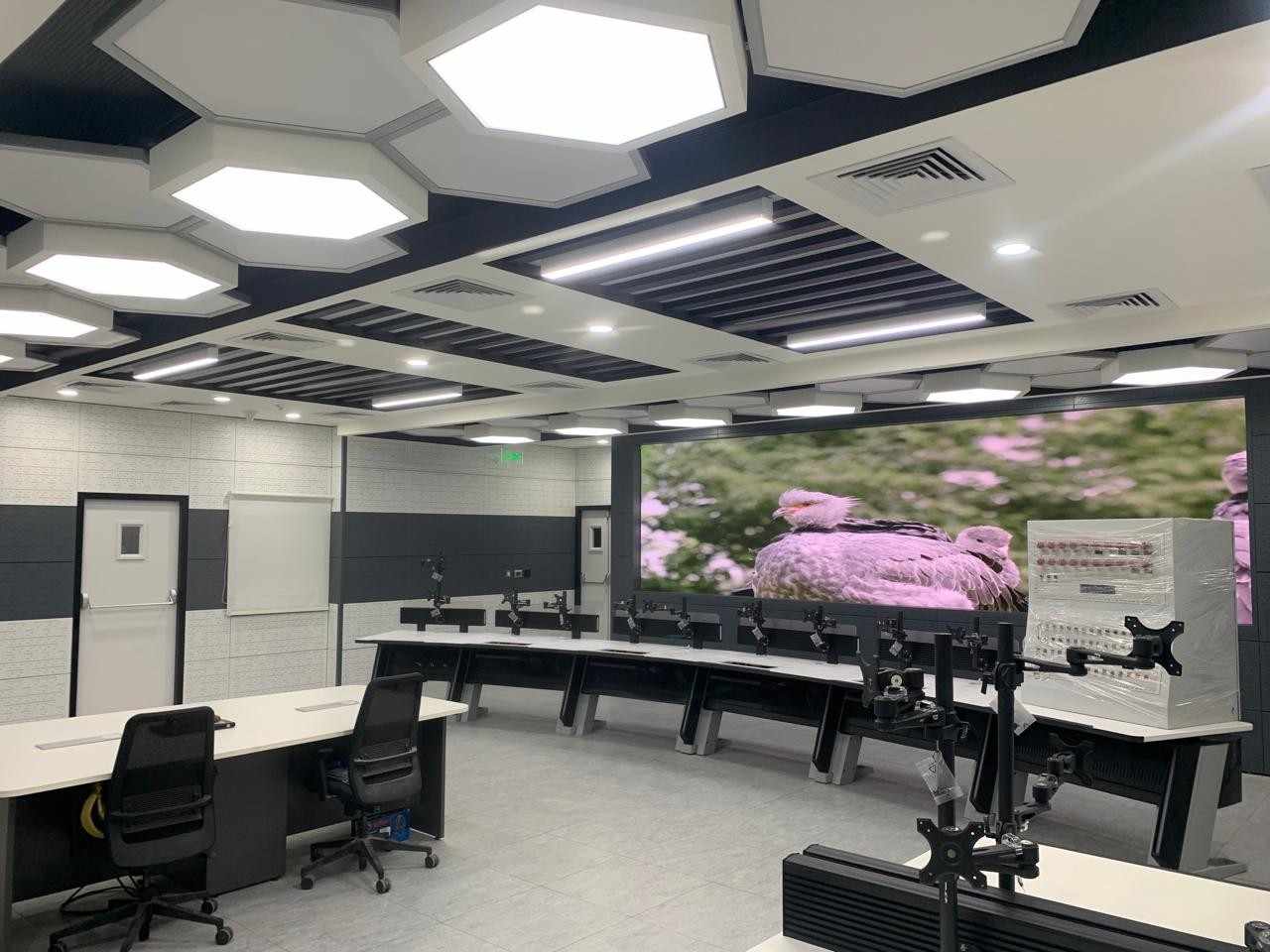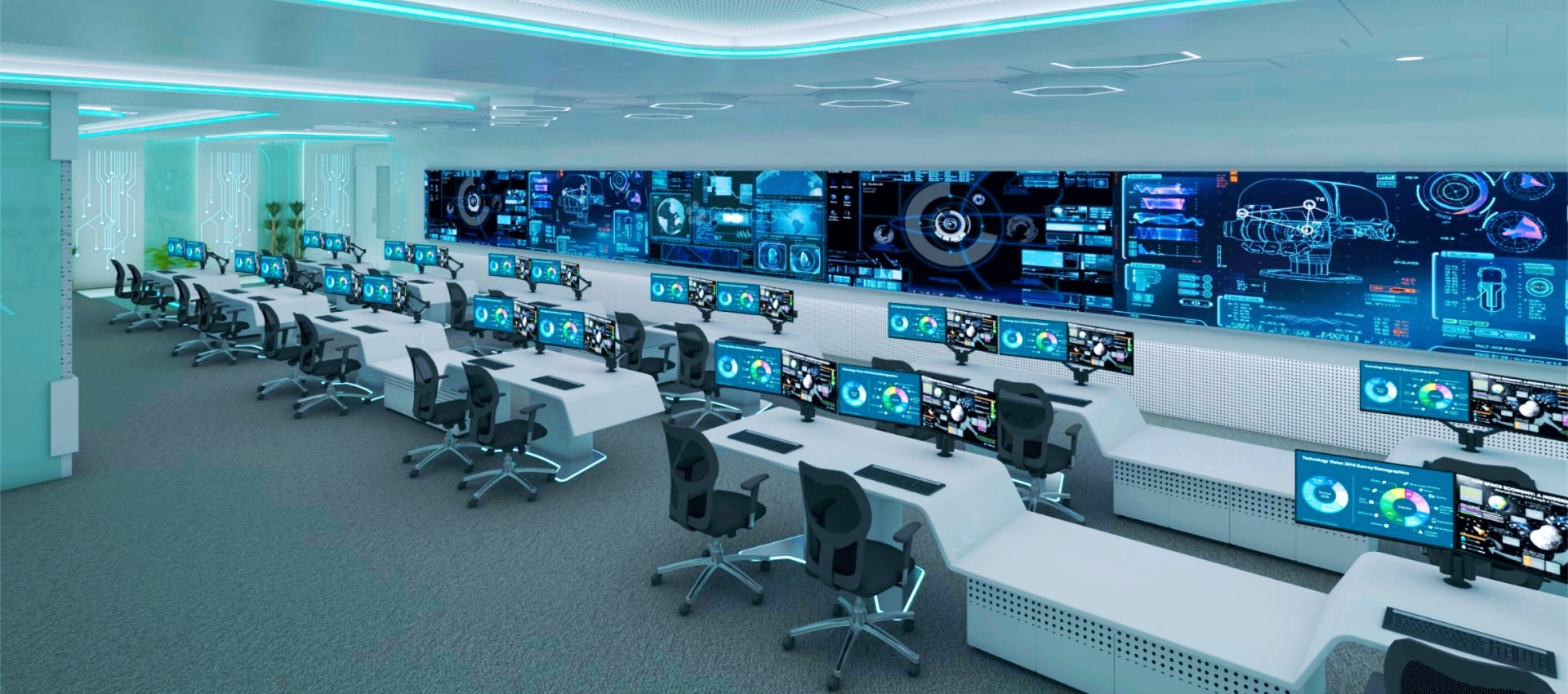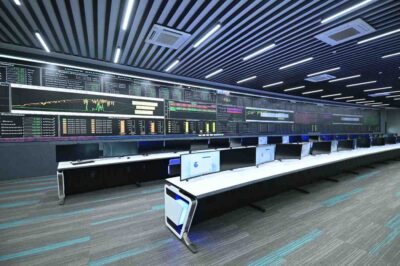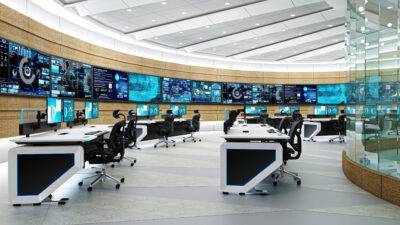
The Power of Control Rooms: Supporting Critical Operations Across the Globe
Control rooms are the center of critical activities in a variety of businesses in today’s busy, globally connected world. Control rooms are incredibly powerful for a variety of functions, including production supervision in industrial plants, transportation system reliability, and security monitoring. These centers – which range from command-and-control centers to security control rooms – are essential to guaranteeing effectiveness, safety, and smooth operations around the world.
This blog will take a dive into control room design, control room infrastructure, and their role in enabling mission-critical operations across multiple industries.
The Essence of Control Rooms
Control rooms serve as the hub for handling data from various sources, giving operators the ability to track, analyze, and respond to events in real-time. These areas are essential for maintaining smooth, effective operations and facilitating prompt decision-making, whether it be mission control in the aerospace sector or emergency response after a natural disaster.
An excellent illustration of this is the security control room, which is now essential for preserving asset protection and public safety. These rooms manage access control, CCTV, and alarm systems. They use advanced software and technology to enable operators to quickly recognize and neutralize possible threats. By doing this, they add a crucial layer of security and safeguard both people and key infrastructure.
The Significance of Control Room Design
A well-thought-out control room design plays a key role in maximizing operational efficiency. Operators work long hours managing and monitoring complex systems, making it essential that the environment is ergonomically correct and optimized for human performance.
Key elements of effective Control Room Design
Ergonomics: In 24/7 settings, operator comfort is extremely important. Adjustable desks, comfortable chairs, and strategically placed screens are a few examples of features that can greatly minimize weariness and increase focus, enabling operators to work at their peak during extended shifts.
Technology Integration: Real-time data visualization and automated procedures are made possible by the smooth integration of technology and software in a contemporary control room. This makes it possible for operators to keep an eye on things and react quickly and efficiently.
Space Utilization: Efficient use of space is essential for maintaining smooth operations. A well-planned layout ensures that operators can move freely, access critical systems quickly, and maintain a clear line of sight to displays or monitor walls.
At the heart of every control room design is the operator’s ability to manage multiple tasks without disruption. Whether for a large-scale enterprise command center or a mission control center, designing with the end user in mind is key to creating a functional and effective environment.
Control Room Infrastructure: The Backbone of Operations
Beyond the design, the control room infrastructure is the backbone of any operational hub. The physical and technical infrastructure supports the entire system, enabling seamless connectivity between various operational components.
Key components of Control Room Infrastructure are as follows:
- Data center: The center of operations, servers and critical data storage systems.
- Communication systems: Robust and redundant communication networks ensure continuous information flow, even in the event of a network failure.
- Power management: Ensuring uninterrupted power supply with backup systems is essential for control rooms that operate round the clock.
A comprehensive strategy is necessary when developing the infrastructure for a network operations center (NOC) or command-and-control center (C&C). A strong, dependable operating environment is created by making sure that every component of the puzzle fits together perfectly, which goes beyond technology alone.
Role of Command-and-Control Centers
Command and control centers are highly specialized control rooms that manage military operations, emergency response, and transportation networks, among other mission-critical functions. Making judgments quickly can make the difference between success and failure in these kinds of situations.
These centers have amazing technology, such as communication systems, data analytics platforms, and video walls, which guarantee that all decisions are supported by precise and current data. For incident management, escalation prevention, and coordinating responses to critical situations, command centers are necessary.
In a similar vein, emergency operations centers (EOCs) are established to oversee and direct response efforts in times of crisis, including natural disasters. For these facilities to function well under strain, they need the best possible technology, infrastructure, and design.
Control Rooms in Various Industries
Control rooms are indispensable across various industries, including:
- Oil & Gas: Keeping an eye on intricate refinery systems, guaranteeing worker safety, and streamlining the manufacturing process.
- Power and Transmission: Overseeing power grids, guaranteeing a steady supply of electricity, and averting blackouts.
- Manufacturing and Process Control: Keeping an eye on manufacturing lines, guaranteeing quality, and reducing idle time.
- Security and Surveillance: Protecting public spaces, monitoring critical infrastructure and ensuring quick response to security threats.
- Transportation: Managing the flow of buses, trains, and airplanes to provide millions of people with comfortable travel every day.
Each industry presents its own set of challenges, and control rooms must be designed to meet these unique requirements, to ensure the smooth running of operations.
Pyrotech Workspace Solutions understands the importance of control rooms in managing critical activities globally. Since its inception in 2006, Pyrotech has grown from a small but dedicated staff to a busy company of 400 people. Designing and implementing customized control room systems for various industries is Pyrotech’s area of competence.
From its base in the beautiful Udaipur city, Pyrotech provides services across sectors such as oil and gas, petrochemicals, power and transmission, security and surveillance, and transportation. Pyrotech’s passion is to provide solutions that not only meet but exceed expectations, helping organizations globally manage their operations with confidence and efficiency.
Pyrotech’s approach to control room infrastructure is all about enhancing human performance while seamlessly integrating advanced technologies. Whether it’s a network operations center, command center, or mission control center, Pyrotech focuses on creating environments that are flexible, adaptable, and built for the future, ensuring your operations run smoothly and effectively.
FAQs
Q 1: What functions does a security control room perform?
The security control room monitors entry control, alarm and CCTV surveillance systems to ensure the safety of people and property.
Q 2: What elements play a key role in control room design?
Ergonomics, technology integration, space utilization and operator productivity are important considerations.
Q 3: What are the benefits of control room infrastructure for critical operations?
Power management solutions, communication networks and data centers make up the control room infrastructure, which guarantees smooth and uninterrupted operations.
Q 4: What types of businesses benefit from control rooms?
Control rooms play a vital role in ensuring operational efficiency and safety in a variety of industries, including oil and gas, manufacturing, power and transmission, security and transportation.






No Comments